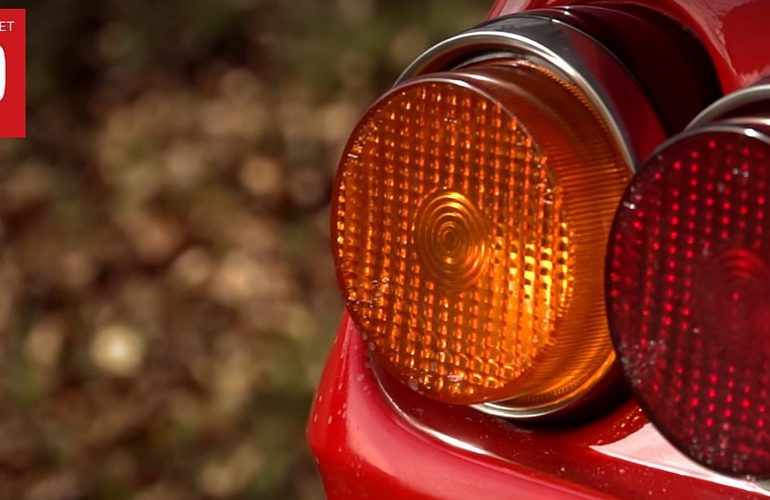FERRARI 365 GTB/4 DAYTONA COUPÉ 1973 – Full test
We are so proud to have been given the opportunity to drive this icon of a car, the Ferrari 365 GTB/4, better known by the unofficial name Ferrari Daytona. This car, with an estimated value of about 800.000 EUR, is a grand tourer automobile produced from 1968 to 1973. It was first introduced to the public at the Paris Auto Salon in 1968 and replaced the 275 GTB/4.
The Daytona was replaced by the mid-engined 365 GT4 Berlinetta Boxer in 1973.
The unofficial Daytona name is reported to have been applied by the media rather than Ferrari and commemorates Ferrari’s 1-2-3 finish in the February 1967 24 Hours of Daytona with a 330 P3/4, a 330 P4 and a 412 P.
Unlike Lamborghini’s then-new, mid-engined Miura, the Daytona was a traditional front-engined, rear-drive car.
The engine, known as the Tipo 251 and developed from the earlier Colombo V12 used in the 275 GTB/4, was a 4.4 L (4,390 cc, 267.9 cid) DOHC V12 with a 60° bank angle, 365 cc per cylinder, 81 mm (3.2 in) bore and 71 mm (2.8 in) stroke, featuring six Weber twin carburettors (40 mm Solex twin carburettors were used alternatively). At a compression ratio of 9.3:1, it produced 357 PS (263 kW; 352 hp) and could reach 280 km/h (174 mph). 0-60 mph (97 km/h) acceleration was just 5.4 seconds. For the American version, slight modifications were made – the compression ratio was reduced to 8.8:1 and the exhaust system was equipped with a large central silencer, necessitating visible alterations to the primary pipes.
The five-speed manual transmission (of the transaxle concept) was mounted in the rear for optimal weight distribution, and a four-wheel independent suspension featured wishbones and coil springs.
Although it was also a Pininfarina design, as with many previous Ferrari road cars (by Leonardo Fioravanti), the 365 GTB/4 was radically different. Its sharp-edged styling resembled a Lamborghini more than a traditional Pininfarina Ferrari.
Early Daytonas featured fixed headlights behind an acrylic glass cover. This particular setup was completely abandoned in 1971 favor of retractable pop-up twin headlights due to new safety regulations in the U.S., which outlawed headlights behind covers. Leonardo Fioravanti, designer, interviewed on TV car show had confirmed a popular rumor that it took him 7 days to design a Daytona.




